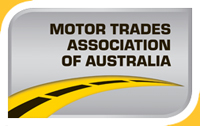Commercial Vehicle Wholesaling in Australia
Growth in the Commercial Vehicle industry was hit particularly hard by the Global Financial Crisis as businesses put off large purchases and financial institutions tightened lending regulations. But as the economy revived there was pent-up demand for such purchases and the industry experienced significant growth in 2009-10. This was followed by a period of slow growth as demand for commercial vehicles remained low until 2012-13.
Growth in the commercial vehicle industry seems to ebb and flow, driven by a combination of demand, economic conditions and Government incentives. There appears to be an increase in sales recently with low interest rates and a tax incentive for purchases of vehicles under $20,000. However, many in the motor industry would like to see this threshold increased so businesses could purchase safer, more fuel-efficient, environmentally friendly vehicles. With plans to implement more stringent fuel emissions standards in the future, it is likely that businesses would be encouraged to purchase such vehicles in order to comply with Government standards, and also reduce costs on rising fuel prices and vehicle servicing. It is forecast that the Commercial Vehicle industry will experience slow growth for a number of years as businesses begin to comply with these changes.






